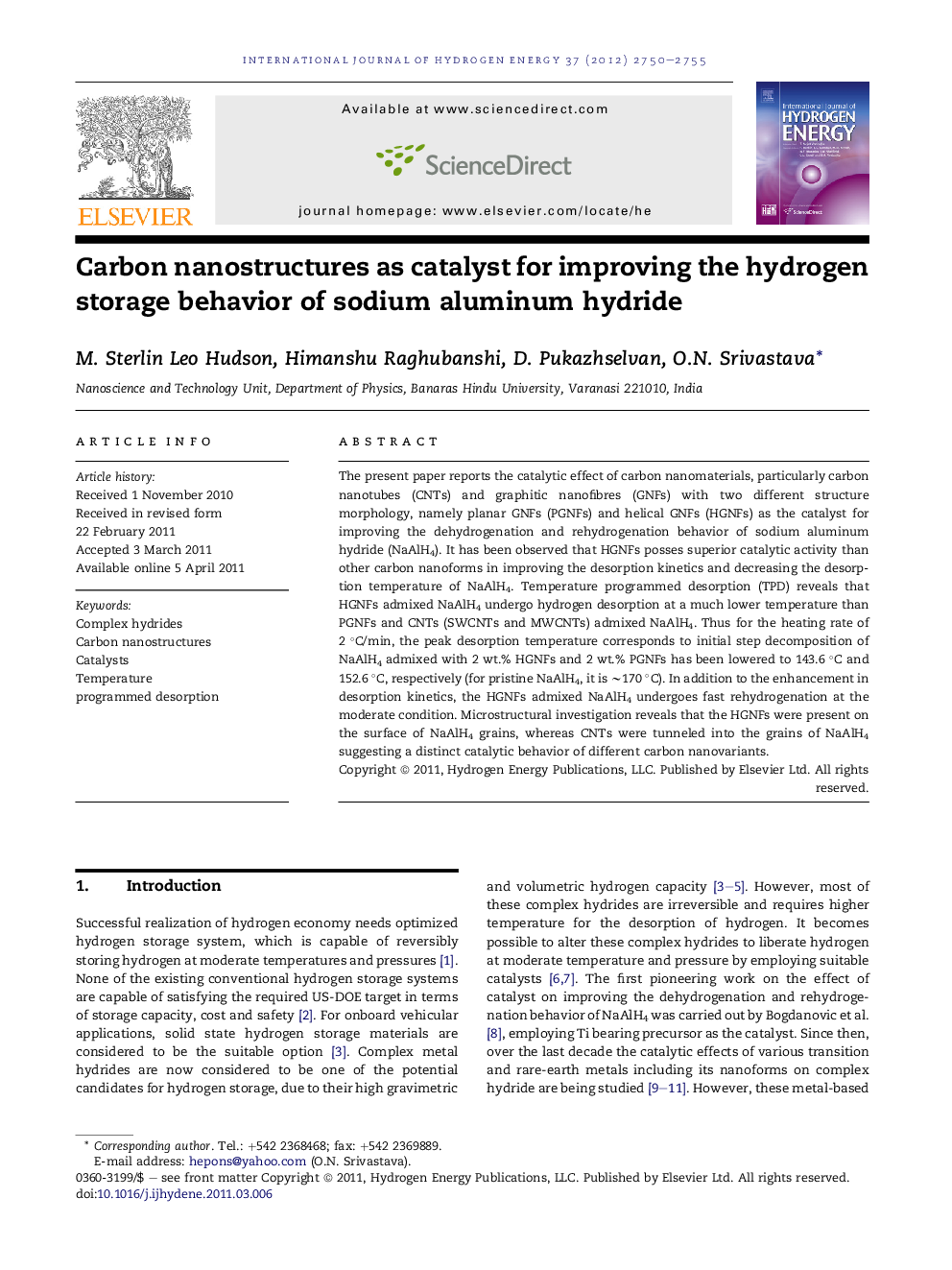| Article ID | Journal | Published Year | Pages | File Type |
|---|---|---|---|---|
| 1271702 | International Journal of Hydrogen Energy | 2012 | 6 Pages |
The present paper reports the catalytic effect of carbon nanomaterials, particularly carbon nanotubes (CNTs) and graphitic nanofibres (GNFs) with two different structure morphology, namely planar GNFs (PGNFs) and helical GNFs (HGNFs) as the catalyst for improving the dehydrogenation and rehydrogenation behavior of sodium aluminum hydride (NaAlH4). It has been observed that HGNFs posses superior catalytic activity than other carbon nanoforms in improving the desorption kinetics and decreasing the desorption temperature of NaAlH4. Temperature programmed desorption (TPD) reveals that HGNFs admixed NaAlH4 undergo hydrogen desorption at a much lower temperature than PGNFs and CNTs (SWCNTs and MWCNTs) admixed NaAlH4. Thus for the heating rate of 2 °C/min, the peak desorption temperature corresponds to initial step decomposition of NaAlH4 admixed with 2 wt.% HGNFs and 2 wt.% PGNFs has been lowered to 143.6 °C and 152.6 °C, respectively (for pristine NaAlH4, it is ∼170 °C). In addition to the enhancement in desorption kinetics, the HGNFs admixed NaAlH4 undergoes fast rehydrogenation at the moderate condition. Microstructural investigation reveals that the HGNFs were present on the surface of NaAlH4 grains, whereas CNTs were tunneled into the grains of NaAlH4 suggesting a distinct catalytic behavior of different carbon nanovariants.
Graphical abstractFigure optionsDownload full-size imageDownload as PowerPoint slide
